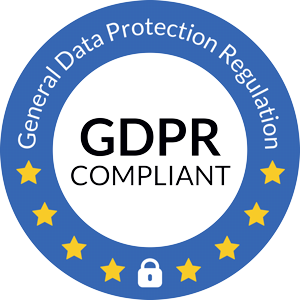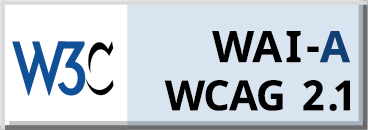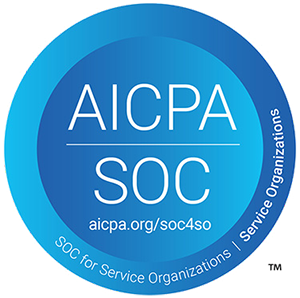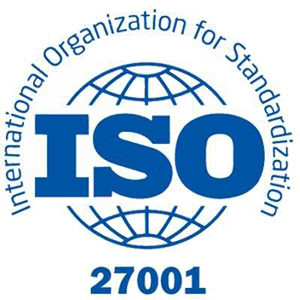In today’s competitive talent market, streamlining your recruitment pipeline isn’t just a “nice-to-have” - it’s critical. Yet, many organizations still rely on fragmented processes, including spreadsheets, email chains, manual approvals, and siloed systems. These stop-gap measures introduce delays, inconsistencies, and poor candidate experiences that erode your employer brand and inflate your cost-per-hire.
Workflow Tools provide a centralized, automated framework to manage every stage of recruitment - from requisition approval and candidate screening to interview orchestration and offer management. By codifying best practices into repeatable workflows and layering in modern capabilities like unified notifications and AI assistants, you reduce manual effort, improve visibility, and ensure a seamless experience for both candidates and hiring teams.
Below are six clear signs your hiring process is overdue for workflow automation - and the essential features that will drive your next-generation hiring engine.
Sign 1: Manual Coordination and Spreadsheet Overload
The Issue:
Recruiters often toggle between spreadsheets, ATS records, and email threads just to track candidates. Every status update—phone screen, interview scheduled, feedback collected—requires manual data entry or copy-and-paste.
Why It Matters:
- Time Drain: Recruiters spend almost half of their day on admin tasks rather than sourcing or engaging talent.
- Error-Prone: One misplaced cell can lead to duplicate interviews, missed offers, or miscommunication.
Workflow Automation Solution:
An automation builder lets you automate each handoff: once a candidate completes a screening questionnaire, the workflow auto-advances their status, notifies the next stakeholder via the Notification Inbox, and even schedules interviews—no manual steps required.
Impact:
Recruiters reclaim hours each week, data accuracy soars, and candidates move through your pipeline without bottlenecks.
Sign 2: Lack of Process Visibility for Stakeholders
The Issue:
Hiring managers constantly ask, “Where is candidate X?” Recruiters scramble to compile updates, and executives lack real-time metrics.
Why It Matters:
- Slower Decisions: Uncertainty delays approvals and lengthens time-to-hire.
- Accountability Gaps: Without clear logs, it’s impossible to pinpoint bottlenecks or workload imbalances.
Notification Inbox & Action Tracking:
A single Notification Inbox aggregates task alerts, interview requests, and feedback reminders for recruiters and managers across email, SMS, and in-app messages. Every candidate touchpoint and hiring-manager action (e.g., submitting feedback, approving offers) is time-stamped and recorded, so you always know who did what and when.
Impact:
Transparency replaces chaos. Teams stay aligned, approvals happen faster, and you hit your hiring targets with confidence.
Sign 3: Inconsistent Candidate Experience
The Issue:
One candidate gets a response within hours; another waits days. Interviewers ask different questions and use varied scorecards, resulting in a disjointed experience.
Why It Matters:
- Drop-Off Rates: More than half of the applicants abandon the process without timely updates.
- Brand Reputation: Inconsistent experiences harm your employer brand.
Enhanced Candidate Experience & Mobile Responsiveness:
Modern workflow tools deliver mobile-responsive application portals and SMS or in-app notifications, ensuring candidates stay informed on any device. Pre-configured templates and bulk actions (e.g., bulk email rejections or interview invites) guarantee every candidate receives consistent, on-brand communications, whether on desktop or mobile.
Impact:
Candidates feel engaged and respected, your Net Promoter Score (NPS) climbs, and your talent pipeline stays full.
Sign 4: Slow Time-to-Hire and High Drop-Off Rates
The Issue:
Protracted scheduling, manual follow-up, and delayed feedback lead to sluggish hiring cycles. Top talent moves on.
Why It Matters:
- Competitive Disadvantage: A lot of candidates withdraw if the process drags on.
- Rising Costs: Longer cycles increase agency fees and internal resource strain.
Agentic AI Assistant & Bulk Actions:
An Agentic AI Assistant surfaces in your workflow to proactively suggest interview slots, draft personalized outreach, and even nudge hiring managers for feedback - automatically. For high-volume roles, use bulk actions to send or reschedule hundreds of interviews in one click. The result? Up to 50% faster time-to-hire and dramatic reductions in candidate drop-off.
Impact:
Your team moves faster, candidates stay engaged, and you secure top talent before competitors even send an offer.
Sign 5: Recruiter Burnout and Hiring Manager Frustration
The Issue:
Recruiters juggle requisition approvals, sourcing, interview coordination, feedback collection, and offer letters. Hiring managers chase recruiters for status updates. The admin burden leads to burnout and high turnover.
Why It Matters:
- Team Attrition: Recruiting functions see turnover rates of less than 50% when overloaded.
- Strategic Neglect: Busy recruiters can’t focus on talent pipelining or employer branding.
Agentic AI Assistant & Automated Workflows:
Your AI assistant for recruiters and hiring managers can autonomously triage tasks - assigning open requisitions, prompting for feedback, and drafting offer letters. Combined with workflow automation, routine tasks vanish from your team’s to-do list, freeing them to focus on strategic priorities like candidate engagement and workforce planning.
Impact:
Reduced administrative load, higher recruiter satisfaction, stronger collaboration, and a more strategic approach to talent acquisition.
Sign 6: Absence of Analytics and Actionable Insights
The Issue:
Without consolidated analytics, it’s hard to know which stages slow down candidates, how engaged hiring managers are, or where to optimize process flow.
Why It Matters:
- Hidden Bottlenecks: You can’t fix what you can’t measure - delays in one stage ripple across the entire cycle.
- Missed Opportunities: Lack of visibility into hiring-manager responsiveness or candidate drop-off points prevents data-driven improvements.
Tracking & Reporting Features:
Workflow tools should offer dashboards that track both candidate behaviors (application starts, interview completions) and hiring-manager actions (feedback turnaround, approval times). Combine these signals with customizable reports to surface trends, like roles with high drop-off or teams with feedback delays, so you can optimize resource allocation and refine workflows.
Impact:
Data-driven insights empower you to continuously improve process efficiency, allocate recruiting resources effectively, and deliver a consistently excellent candidate experience.
Essential Features That Drive Modern Hiring
Below are the key capabilities to look for when evaluating workflow tools for recruitment:
| Feature | Benefit |
| Workflow Automation |
Automate every stage—requisition approvals, screening, interview scheduling, offer management.
|
| Unified Notification Inbox | Centralize alerts, task reminders, and communications across channels for recruiters & managers. |
| Agentic AI Assistant | Proactively surface tasks, draft messages, suggest schedules, and nudge stakeholders intelligently. |
| Bulk Actions | Send mass invites, rejections, or status updates with a single click—ideal for high-volume hiring. |
| Action Tracking & Analytics | Monitor candidate and hiring-manager actions in real time and generate actionable reports. |
| Mobile-Responsive Design | Provide candidates and stakeholders with an optimized experience on any device, anywhere. |
| Enhanced Candidate Experience | Branded, consistent touchpoints - SMS, email, in-app—reduce drop-offs and boost satisfaction. |
Measuring Success: KPIs and ROI
To quantify the impact of these features, track metrics before and after implementation:
- Time-to-Hire Reduction: Aim for a 30–50% decrease by automating scheduling and follow-up.
- Candidate Completion Rate: Target a 20% lift in application completion with mobile-responsive flows and timely notifications.
- Recruiter Productivity Gains: Measure administrative hours reclaimed per week - achieving 20+ hours per recruiter is possible.
- Feedback Turnaround Time: Use AI-driven nudges to cut hiring manager response times by half.
- Engagement Analytics: Monitor candidate and stakeholder interaction rates within your workflows to pinpoint areas for improvement.
- Candidate Satisfaction (NPS): Enhance your employer brand with consistent and respectful communications, boosting NPS by 10–15%.
Many organizations recoup their investment in workflow tools within 6–9 months through efficiency gains, reduced agency spend, and lower recruiter turnover.
Conclusion & Next Steps
If your hiring team battles manual spreadsheets, scattered notifications, or overloaded recruiters, it’s time to embrace modern workflow tools. By combining workflow automation, a unified notification inbox, an agentic AI assistant, bulk actions, action tracking & analytics, and mobile-responsive design, you’ll transform your recruitment process into a true competitive advantage - delivering faster, more engaging experiences for candidates and hiring teams alike.
Ready to elevate your hiring? Request a demo of the workflow automation suite today and discover how our AI-powered tools can drive efficiency, visibility, and candidate delight at scale.







Leave a Reply